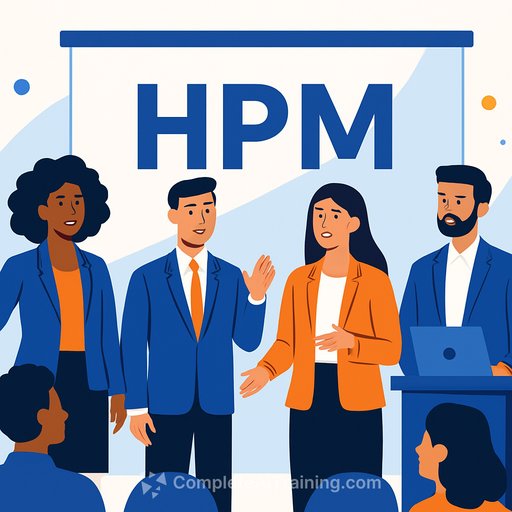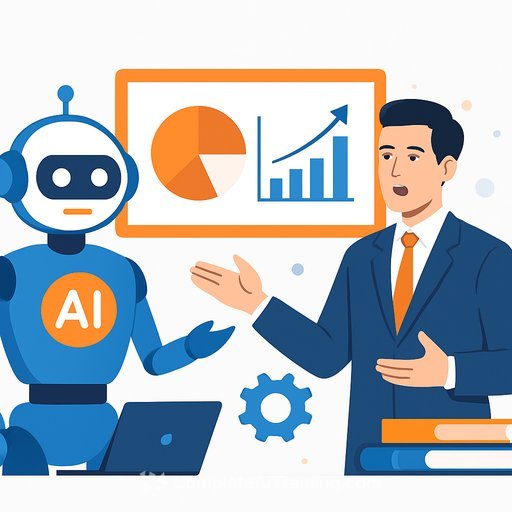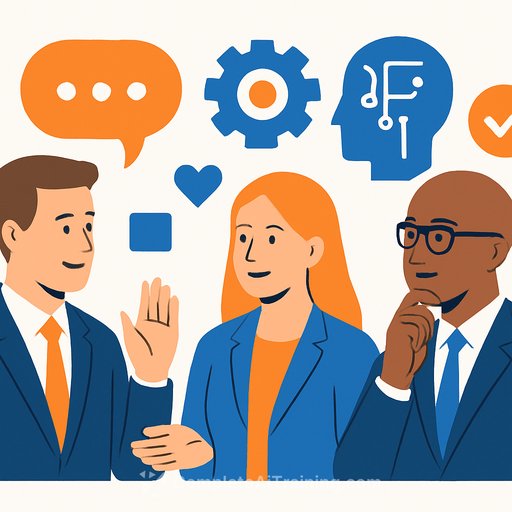HR in 2026: AI Will Redefine How Work Gets Done
ADP's 2026 HR Trends Guide points to a clear theme: AI is pushing HR to think in skills, build smarter systems, and partner tightly with IT. The work isn't about tech for tech's sake. It's about better decisions, cleaner processes, and a more connected employee experience.
If you lead HR, the next year is about two things: getting practical with AI in daily workflows and building the guardrails that keep the organization confident and compliant.
People Trends: From Roles to Skills
Organizations are mapping skills to strategy, then redesigning roles to match business needs. With AI steepening the learning curve, the most valuable teams will be those that adapt fast and learn in the flow of work.
- 84% of large companies say AI streamlines processes without replacing employees (76% midsize, 73% small; ADP Market Pulse, April 2025).
- Shift the narrative: AI is a collaborative partner, not a threat. Pair tech rollouts with hands-on training and real use cases.
- Track internal mobility, skill acquisition, and time-to-productivity as core metrics.
"Helping people adopt a mindset of technology collaboration is important to successful AI adoption... AI becomes a facilitator of human connection and engagement." - Tiffany Davis, chief talent acquisition, inclusion and diversity officer, ADP
AI in HR: Generative + Agentic in the Flow of Work
Generative AI supports content and insights. Agentic AI goes further by coordinating multistep tasks with human oversight. Think onboarding orchestration, payroll data checks, knowledge lookups, and proactive recommendations from HR data.
- Automate high-friction workflows: onboarding, validations, anomaly detection, and policy Q&A.
- Embed AI inside existing systems where work already happens. No extra portals.
- Set guardrails: approvals for high-risk actions, audit trails, and clear escalation paths.
"Agentic AI unlocks new frontiers of automation... Together, they deliver scalable automation that's trustworthy, compliant and resilient when conditions change." - Amin Venjara, chief data officer, ADP
Regulation: AI Use, Pay Transparency, and Multijurisdictional Compliance
Rules are firming up. The EU and several U.S. states (including Colorado) are introducing requirements for transparency, audits, and risk controls when AI supports employment decisions. For context, review the EU AI Act overview from the European Parliament.
"When evaluating any AI tool, consider whether it was developed using secure, high-quality data... Maintaining human oversight, providing transparency to employees, regularly monitoring output and addressing potential issues early are key." - Helena Almeida, vice president, managing counsel, AI legal officer, ADP
Pay transparency is expanding, especially across the EU. Expect more disclosure on pay ranges, advancement paths, and gender gaps. The directive sets clear expectations for employers.
"With pay transparency laws growing worldwide, employers must evaluate compensation levels now... ensure current pay ranges are fair, competitive and based on objective work-related criteria." - Helena Almeida
Operating across states or countries adds friction. You'll deal with varying and shifting legal requirements. The fix: simplify where possible.
"Having multiple laws with different requirements... It's often possible to develop a standard, focused on the employees' rights and best practices, that can work in most circumstances." - Meg Ferrero, vice president and assistant general counsel, ADP
Data, Governance, and the HR-IT Partnership
Agentic AI raises the bar for data quality, privacy, and security. Governance needs to mature quickly. According to ADP's internal analysis (2025), 20% of small businesses, about half of midsized, and two-thirds of large companies have a generative AI governance process in place.
- Standards first: data lineage, access policies, retention rules, and incident response.
- Quality gates: validation, drift checks, bias testing, and human-in-the-loop reviews for sensitive outputs.
- Vendor diligence: integrations, encryption, audit logging, and documented risk controls.
HR and IT are now inseparable. IT owns selection, security, and integrations. HR owns adoption, change, and the human impact. Treat this as one operating unit.
"IT is definitely a bigger part of the decision-making... user management, data security, integrations... Are they modern? Are they scalable?" - Tonya James, vice president of product management, global payroll, ADP
What HR Leaders Can Do This Quarter
- Run a skills inventory and map to 2026 business goals. Highlight gaps tied to key roles.
- Select two AI use cases with clear ROI (e.g., onboarding orchestration and payroll validation). Pilot for 60-90 days.
- Stand up a lightweight AI governance group (HR, IT, Legal, Security). Publish a one-page policy and review cycle.
- Update your pay practices: confirm current ranges, audit for compression, and prepare for disclosures.
- Create a standard compliance baseline, then add local addenda for outliers. Fewer policies, clearer execution.
- Launch hands-on AI training for managers and HRBPs. Tie it to daily workflows, not theory.
- Set adoption metrics: time saved per process, error rates, candidate/employee satisfaction, and escalation counts.
- Communicate the message: AI assists people. Humans make decisions and set context.
Resources
Bottom Line
2026 belongs to HR teams that get precise with skills, apply AI in the flow of work, and keep governance simple and strong. Keep humans in control, document the rules, and measure outcomes. That's how you build confidence-and results-at scale.
Your membership also unlocks:






